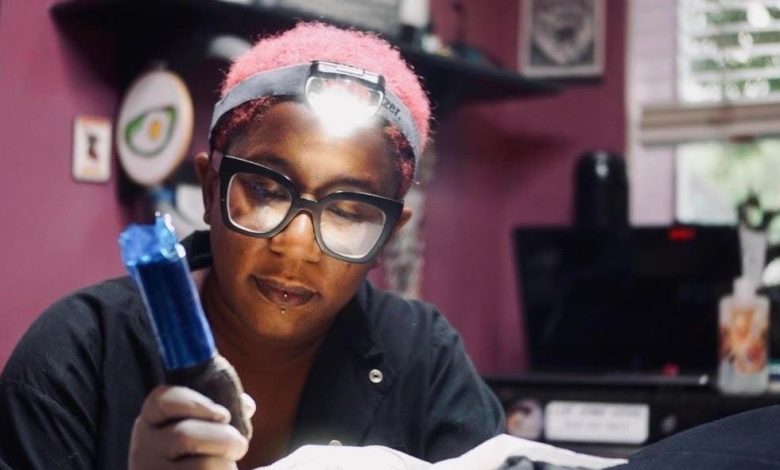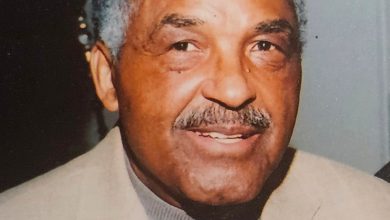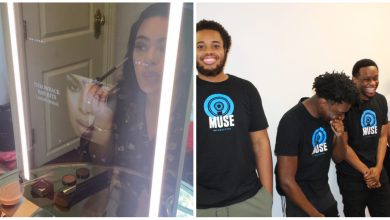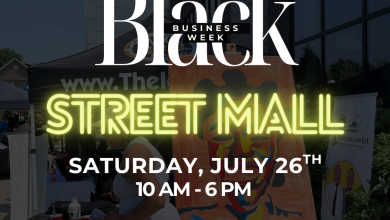How One Black Woman Is Building Legacy Through Tattoos In New Orleans

Still image of Malaika “Mecca” Burke tattooing.
Malaika “Mecca” Burke spotted a $3.9 billion market inefficiency hiding in plain sight: Black Americans get tattoos at the highest rate of any demographic—39% versus 32% of white Americans—yet less than 5% of tattoo shops are Black-owned. Burke didn’t come to New Orleans expecting to break barriers, but today, she’s the only Black woman tattoo shop owner and the second in its history. She arrived in 2006 as a college graduate with an animation degree, a painter’s eye and a volunteer’s heart, drawn by the aftermath of Hurricane Katrina and the call to help rebuild what the storm had torn apart.
“I was one of those do-goodery volunteers,” Burke said with characteristic directness, her hands never pausing in their work.
What began as a summer of service stretched into something more profound—a recognition that this layered, beautiful city offered something she’d never found in her native New Jersey: space to be authentically, unapologetically herself.
Still Image of Mecca’s Art.
“I love this city so much,” Burke reflected. “It’s fundamentally broken, but the people—this has probably been the most warmth and the most welcomed I’ve ever felt anywhere. There’s a lot of space to be an absolute weirdo, and I really appreciate that.”
This appreciation for New Orleans’ embrace of the unconventional runs deeper than personal comfort and shapes Burke’s entire approach to her craft and business. Her shop operates as something rare in the tattoo industry: a genuinely safe space where queer people, trans people and Black people can exist without constantly negotiating their presence or defending their worth.
“Lots of queer people, lots of trans people, lots of Black people” work in her shop, Burke noted—identities that “definitely would not have been comfortable in the tattoo industry” when she started 15 years ago.
The importance of this sanctuary cannot be overstated in an industry that Burke describes as “mean and unforgiving,” where “there’s no HR” and artists must “nut up and demand a space, because no one is going to give you anything.”
When Representation Meets the Bottom Line
The business case for Burke’s approach becomes clear in the demographics. While Asians have the lowest tattoo adoption at 14%, Burke’s core clientele, Black and Hispanic communities at 39% and 35% respectively, drive industry demand.
Burke’s path to ownership wasn’t ordained by family tradition or a traditionally artistic calling. She stumbled into tattooing through necessity and stubbornness, securing an apprenticeship because a shop owner “needed free labor.” The memory of her first tattoo remains visceral: sobbing inconsolably while a supervisor berated her for a minor mistake, yet pushing through to complete the work.
Mecca tattooing a client
“Maybe that was my first lesson,” Burke said. “You just gotta keep going even if you want to cry or even if you’re actively crying.”
That lesson would become the foundation for her attitude and approach to business—and the inspiration for her Magazine Street storefront, Hell or High Water. The phrase captures both her grit and New Orleans’ own survival story, an understanding that surviving in the tattoo industry demanded a militant commitment to occupying space that others would deny you. As a Black woman in predominantly white, male shops, Burke faced constant assumptions about her competence and belonging. Clients would bypass her expertise, seeking confirmation from male colleagues. The sexism was blatant; the racism more subtle but equally corrosive.
“In New Orleans, I feel like a lot of the time I got discounted, it was never because I was Black, only because I was a woman,” Burke said. It’s a distinction that speaks to the city’s particular racial dynamics, a place where Black culture forms the foundation of what makes New Orleans distinctive, even as that cultural appreciation doesn’t always translate into economic equity or social justice.
Close up tattoo by Malaika Mecca Burke.
“Most of the businesses are started and run by old white dudes,” Burke explained, “so you’re gonna find just more white dudes.” The result is a self-perpetuating cycle where legitimate paths to mastery remain closed primarily to Black artists, forcing many to work from their homes rather than shops and operate outside the industry’s recognized networks of support.
“You just gotta keep going—even if you’re actively crying.”
“Mostly Vibes”—But Also Strategy
Burke’s artistic vision largely ignores these industry politics while remaining tied to personal aesthetics. Her work gravitates toward florals and portraiture, faces that mesmerize her in ways she can’t fully articulate.
“I don’t know what it is about faces that kind of mesmerizes me, but I really enjoy recreating that,” she said. Her own body tells no grand narrative through ink; instead, it’s a collection of “mostly vibes” punctuated by memorial work and friendly collaborations.
When asked what mark she hopes to leave on the world, Burke’s answer is refreshingly unburdened by grandiosity: “Good vibes.”
In a cultural moment obsessed with branding and calculated impact, her calling to simply “making cool s—” and “helping some people smile” feels both radical and grounded.
By creating space for alliance rather than competition and for vulnerability rather than machismo, she’s rewriting the rules of what a tattoo shop can be. She hopes that her NOLA Black tattoo convention will continue this conversation.
“That’s how you become better,” Burke noted. “You work with other artists, and they’re like, ‘Oh, I do it this way,’ and you’re like, ‘Oh, but I do it that way.’ Those things help you grow.”
The convention also addresses client needs that mainstream tattoo shops often overlook. “You want to get work done by people that look like you, people that you feel like understand you,” Burke explained, particularly for larger pieces requiring hours of intimate proximity.
Painting by Malaika Mecca Burke
Why Inclusive Ink Is Smart Business
The economics support this approach, with cultural competency becoming a key differentiator as the customer base diversifies. In Burke’s hands, tattooing joins this tradition, each piece honoring personal identity and contributing to a larger history about who gets to make a lasting impact in this city.
As New Orleans continues to evolve—gentrifying and tussling with its layered racial history—Burke’s work offers a model for how individual creativity can serve broader justice without sacrificing artistic integrity.
In the end, Burke’s legacy may be less about the specific images she creates than about the space she’s opened for others to create.
“In the end, the world might end tomorrow,” Burke said with characteristic pragmatism. “I can’t be worried about that. I just wanna make cool things and make some people smile.”
In a city that has weathered centuries of endings and beginnings, Burke’s commitment to joy and beauty in the face of uncertainty feels less like resignation than wisdom—the kind that comes from choosing, again and again, to build something lasting in a world designed to be temporary.




